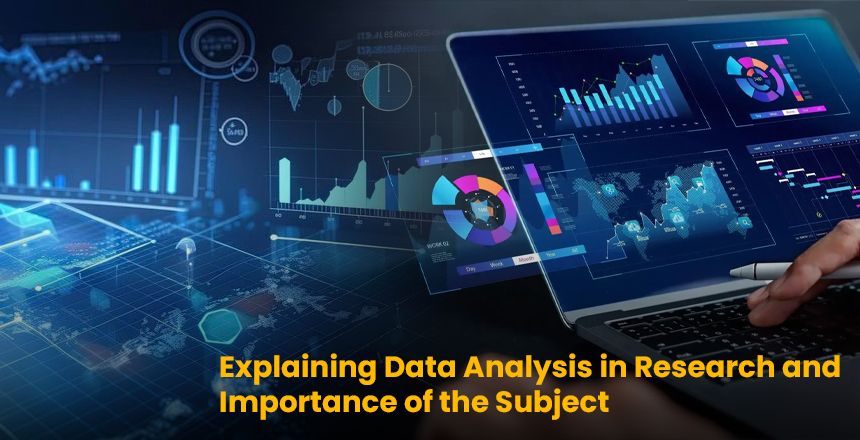Gathering data in research is only the first part of what is needed. The most valuable discoveries—those that bring new knowledge, fix issues and spark innovation—appear when we analyze the data. It’s through data analysis that we understand the problem more clearly. It isn’t only a required step in research; it transforms information into something valuable we can understand.
To make it simple, let’s say you have all sorts of survey answers, interview reports, results from your lab or numbers from your company’s financials. Having a look does not guarantee you the answers you need. Take time to make them organized, make appropriate patterns, find relations and draw conclusions. It is this basic process: data analysis.
What does Data Analysis mean in a Research context?
To do data analysis in research, you inspect, clean, transform and model data to discover helpful facts, reach conclusions and back up decisions. It guides researchers through using a structured approach to massive amounts of information.
Data analysis in a study varies based on the approach; it may be statistical analysis or practical/meaningful analysis from observations. Modern researchers commonly rely on different kinds of research.
Areas you might encounter when analyzing data are presented below.
- This type of analysis explains the main characteristics of the data.
- This is used to estimate about a whole group using data from part of it.
- Exploratory analysis is the process of observing data to find similarities, trends or links among data.
- Content or thematic analysis – A technique used in qualitative research to find out what main topics appear repeatedly.
Steps Involved in Data Analysis
Though the details change by area and type of research, nearly all research takes these general steps for data analysis.
- Data Collection
Data collection from dependable sources should come first in the process.
- Data Cleaning
By removing issues, repeats and unneeded information, data quality is maintained.
- Data Organization
After structuring the data with tables, charts and coding it into different categories, you can analyze the data further.
- Exploring Analysis Methods
All the information is handled using statistical software (such as SPSS, R, Excel, Python) or techniques for analyzing qualitative data.
- Talking about and explaining what your results mean
Explaining the numbers or themes—what do they represent when we look at the research question?
- Reaching Judgments and Reporting
To complete the process, the insights are shown in a report, paper or presentation to support arguments, suggest recommendations or add to our understanding.
Why is Data Analysis Important in Research?
Now let’s discuss why data analysis is so important in research. Here is why:
1. Data is transformed into knowledge by the process.
If we don’t analyze data, it is just a pile of facts. Analyzing data gives researchers the meaning and importance they need to understand what is actually happening.
2. Helps Make Decisions With Supporting Evidence
Good conclusions rely on facts and not on opinions. Using data allows us to confirm our hypotheses and support the outcomes we find.
3. Detects Common and Changing Cycles
Looking at data can reveal things about customers and social issues we might not realize without it.
4. Improves Decision-Making
Good analysis in applied research helps people make better choices. It supports efforts that actually change the world.
5. Using a representation helps you become more precise and less likely to be biased.
When you work systematically with data, your chances of mistakes caused by bias are reduced.
6. Helps you understand the big picture.
With statistical analysis, it’s possible to extend results from a sensitive group to a larger one, making the study more useful.
7. Promotes Innovation
Finding gaps, oddities or surprising results common during data analysis become a starting point for new theories and inventions.
Real-Life Examples of Data Analysis in Research
- Data analysis in medical research can identify the treatments that work the best for people from different groups.
- In the field of social science, statistics allows for the study of changes in people’s actions, views or challenges they face.
- It guides marketing work, new product creation and improving customer experience.
- Within education, outcomes help assess how well new teaching approaches are working or how the performance of students has developed.
Conclusion
Data analysis is the main part of what researchers do, not simply a small step. It’s where data becomes valuable by revealing important insights and learning begins. If analysis is missed out, research fails to be clear, dependable and complete.
Regardless of whether you are a student doing a thesis, a scientist working on something new or a professional making decisions using data, being strong in data analysis will noticeably increase the quality and credibility of your outcome. It’s absolutely essential, not just important.








